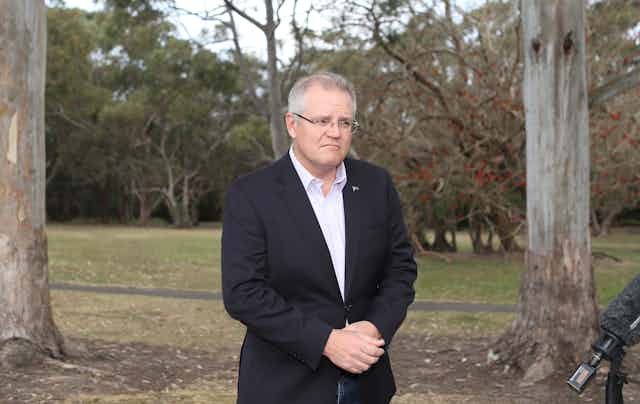Vital Signs is a weekly economic wrap from UNSW economics professor and Harvard PhD Richard Holden (@profholden). Vital Signs aims to contextualise weekly economic events and cut through the noise of the data affecting global economies.
This week: Australia continues to grow jobs, but wages aren’t keeping up and policymakers are running out of options.
Let’s begin with an economy that is doing relatively well.
In the US, the data were both predictable and moderately positive.
Consumer prices (as measured by the CPI) were up only 0.1% in October, but this was in line with expectations. Recall that two major hurricanes drove up gasoline prices in September, and those increases rolled off (they were up 13.1% in September and fell 2.4% in October). The year-on-year CPI increase was 2.0% – again, in line with expectations.
Read more: Trump's 'America first' trade policy ignores key lesson from Great Depression
The Producer Price Index (PPI) rose by a healthy 2.6% on a year-on-year basis – despite a drop in gasoline prices for producers of 4.6% (note the difference between wholesale and retail price changes). Perhaps most importantly, there were relatively strong increases in elements of the index that the US Federal Reserve cares most about (as they are less cyclical than, say, energy prices), like healthcare costs.
Less expected, but happy news, was the 0.2% rise in retail sales. That puts retail sales up 4.6% on an annual basis. This is further evidence of the solid rebound in the US economy.
And now to Australia.
On the plus side, a fair number of jobs are being created. As Treasurer Scott Morrison was eager to point out on Thursday, 296,400 jobs have been created this year; 236,000 of them full-time.
But the continued depressing news is about wages. The wage-price index was up 0.5% for the third quarter, below market expectations of 0.7%. That puts annual wages growth at 2.0%. With inflation running at 1.8%, that means real wages growth is effectively zero. And it has been like that for a long time.
This is causing enormous problems for Australian households and policymakers.
Recall that Australian households are among the most highly leveraged in the world – with debts at around 190% of GDP. So what is going to reduce that debt?
There are two possibilities: more inflation or more income. Inflation helps reduce the debt in real terms, and income helps for obvious reasons. Right now, both avenues look shaky.
On the former, the Melbourne Institute reported on Thursday that inflation expectations fell this month, providing further evidence that future inflation is likely to be low.
On the latter, there has been a continued run of low wages growth. This is an experience being felt in advanced economies around the world. That suggests it is something to do with technology, or global economic conditions, and therefore not all that amenable to policy.
Read more: Trump's 'America first' trade policy ignores key lesson from Great Depression
That leaves us with heavily indebted households, with no obvious way out. This, of course, puts a strain on consumer spending, which in turn affects business investment and employment, and the whole (vicious) cycle loops back on itself.
What is the cut-through for policymakers?
The RBA could drop interest rates from their current 1.50% level – and increasingly some economists are suggesting that. The worry is that a rate cut might further fuel housing prices, making the problem worse, not better.
Federal income tax cuts would be another avenue, but with the budget in structural deficit, and with an economically illiterate crossbench, that looks unlikely.
The government could embark on a major infrastructure spending plan, which could rejuvenate regional employment in areas hit by the forces of globalisation. With interest rates at very low levels, for very long maturities, this seems like a good idea, as long as the projects are assessed on a rational basis.
The concern in this regard is politics. Both major parties have their predilections and bases to pander to. A bad outcome would be, for example, a big coal mine investment by the Coalition, and some uneconomic green-energy boondoggle by the opposition.
As I have said before in this column, the US seems to be navigating the post-2008 economic world relatively well, although caution is certainly warranted. Australia is doing much less well. And the narrative that we have “successfully transitioned from the mining boom” seems a lot more like wishful thinking than hard evidence.

